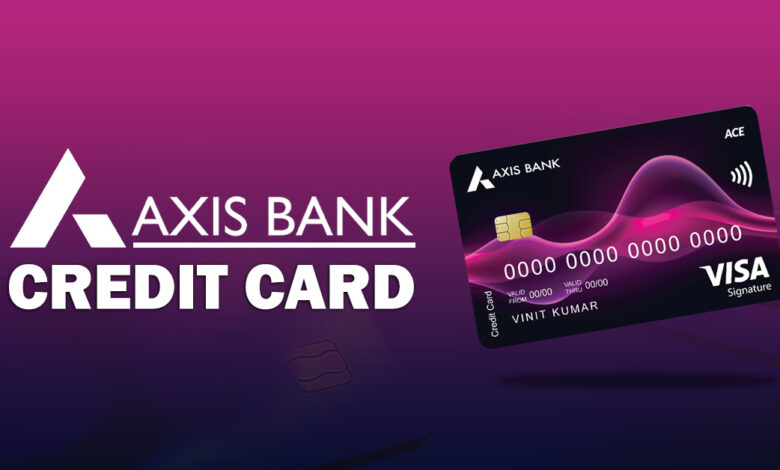Axis Bank Credit Card Holders Cry Foul Over Fraudulent Transactions And “No Response” From The Bank; Why Has Banking Become Such A Pain For Customers In This Country?
Fraudulent transactions hit numerous Axis Bank credit card customers on their credit cards. Some even reported international transactions; however, even being prompted to take action - blocking the card- was met with challenges because "internal servers" were not working. In today's digital age, where convenience is paramount and customer expectations are higher than ever, the banking industry faces a tough challenge - delivering exceptional customer service. Despite technological advancements and regulatory guidelines aimed at enhancing customer experiences, many individuals still encounter obstacles and frustrations when interacting with their banks. Why has banking become such a pain point for customers?

Numerous Axis Bank credit card holders are turning to social media to voice grievances regarding fraudulent incidents, expressing concern over unauthorized transactions and receiving OTPs for activities they haven’t initiated.
Some even reported unauthorized international transactions on their Axis Bank credit card statements.
What is even worse is that many of the customers affected by these fraudulent transactions attempted to block their credit cards but to no avail; apparently, Axis Bank’s “servers” were not responding. Many then tried calling customer service but again failed to get a response.
Many then took to social media to express their woes –
I want to close my Axis Bank Credit Card, but I’m unable to do so because I keep getting the “Internal Server Error” on the app. Your customer care is not responding. Could you please look into this and let me know how I can go about my card closure?

Ironically, several Axis Bank card holders reported transactions even on the new card, which they had yet to receive.
“Something is VERY WRONG with the Axis Bank credit card. One of my cards was used for a fraudulent txn at Uber Eats Canada. Card was reissued – suddenly fraudulent txns on new card WHICH I DONT HAVE YET. @AxisBank credit card. One of my cards was used for a fraudulent txn at Uber Eats Canada. Card was reissued – suddenly fraudulent txns on new card WHICH I DONT HAVE YET”.
Another beleaguered customer wrote- One of the worst credit card experiences. Fraudulently transactions on repeat, blocked the card , then there is a fraudulent transaction on the undelivered card. @AxisBankSupport @AxisBank please take this seriously.
As is mostly the case nowadays, when you go through the set procedure, call customer care, try to get in touch with bank officials, or even write emails – one does not get anywhere (mostly) and the usual and only approach left is to vent out on social media – and that is exactly how and when Axis Bank responded.
What Axis Bank has said
In a response to an Axis Bank card user on its social media handle on X, Axis Bank said,
“Hi, we would like to assure our customers that your Axis Bank card remains absolutely safe. There has been no breach of any systems. We have observed a few unauthorized transactions, from certain specific merchants, whom we have blocked. Those amounts are small and are fully. Recoverable. Those customers who would like to reconfirm any transaction or any aspect on their card contact us directly. We would like to reassure you that we continue to take all steps to ensure robust controls through our advanced transaction monitoring system and transaction reviews. Regards, Team Axis Bank.”
Well, isn’t that what these customers tried to do in the first place?
Now for those who may be wondering what are the guidelines that the RBI may have set for banks and credit card holders well this is as follows –
— The RBI’s recent regulations on credit cards stipulate that card issuers are accountable for compensating complainants for time lost, expenses incurred, financial losses, and any harassment or mental distress caused by the issuer’s fault.
–If a grievance remains unresolved within 30 days of lodging the complaint, the complainant has the option to escalate the matter to the RBI Ombudsman under the Integrated Ombudsman Scheme for resolution.
— Within 30 days of receiving a complaint, the card issuer is obligated to respond to cardholders disputing charges with an explanation and, if necessary, supporting documentation. Banks must promptly notify customers via email, SMS, etc., upon closing a credit card to honor closure requests.
–Customers should be offered various closure options, such as helplines, dedicated email addresses, Interactive Voice Response (IVR), accessible website links, mobile applications, or other convenient methods; they cannot be restricted to a specific channel.
–As per the RBI, failure by card issuers to complete the closure process within seven working days incurs a penalty of Rs 500 per day payable to the customer until the account is closed, provided there are no outstanding balances.
–The master directive mandates credit card issuers to comply with cancellation requests within seven business days, provided the cardholder has settled all outstanding dues.
–It’s worth noting that if a bank or NBFC fails to cancel an account within seven working days, a penalty of Rs. 500 per day is imposed until closure, assuming there are no outstanding balances.
–Furthermore, according to the master directive, card issuers cannot insist on closure requests being sent via post or any other method that may delay receipt of the request.
–Failure to complete the closure process within seven working days attracts a penalty of Rs 500 per day until closure, provided there are no outstanding balances in the account.

Why Has Banking Become Such A Pain Point?
In this country, despite having guidelines in place, banking with any bank can be an arduous task.
The pain arises from outdated online banking platforms, cumbersome mobile apps, and digital experiences that are far from seamless.
According to a 2023 report by Capgemini, while 72% of banking customers expect a smooth omnichannel experience, only 24% feel that their bank delivers on this expectation.
In today’s competitive retail banking environment, understanding customer pain points is not just advantageous but essential.
Customers, with more choices than ever before, are gravitating towards institutions that not only offer diverse financial products and services but also exhibit a genuine comprehension of their challenges and frustrations.
Recent negative experiences with leading banks have prompted contemplation about their capacity, willingness, and ability to acknowledge evolving customer expectations and to develop a comprehensive strategy for delivering optimal customer experiences consistently.
Despite prevalent frustrating experiences shared among my social and professional circles, customers continue to encounter similar issues numerous times, both on the liability and asset sides of banking.

This prompts one to question – why banks often appear indifferent to customer experience and what barriers prevent them from meeting customer expectations effectively.
The Prime Customer VS Regular Customers
While healthy competition exists within the industry, banks often seem neglectful of customer service, particularly for those not classified as ‘prime’ customers.
Although many individuals are aware of the standards of service they should expect, this is not always the case.
As institutions primarily tasked with providing services, banks should prioritize customer-centric approaches.
However, they have struggled to adapt to changing times and make sufficient investments in people, processes, and systems to foster a customer-centric culture.
Long wait times, impersonal interactions, and a lack of empathy from customer service representatives compound the frustration.
A recent study by J.D. Power found that 32% of retail banking customers are dissatisfied with their bank’s customer service.
So, what’s the root cause?
Is it the banks’ indifference to customers due to their size? Or, is there a general lack of information balance between banks and their customers?
Maybe it’s the insufficient financial literacy among customers, or perhaps it’s the distorted incentive systems within banks.
From my perspective, it’s a combination of all these factors.
Banks capitalize on this situation, often escaping accountability for their oversights without facing repercussions from customers. While switching banks might seem like the obvious response to such experiences, customers often see little incentive to do so, resigned to the belief that “it’s the same everywhere you go.”

Why Let A Customer Go?
While regulatory expectations for improved customer service exist, attracting and retaining customers should be at the forefront of banks’ business strategies, given that they are the primary source of revenue.
Banks shouldn’t rely solely on external interventions to enhance customer service; it should be ingrained in their business model.
To achieve this, banks need to establish robust mechanisms for collecting and analyzing extensive customer service data generated daily, translating it into valuable insights into customers’ experiences with bank services and products.
Although queuing management systems, phone banking, and service turnaround times are standard in all banks, the relevant data is often underutilized to enhance service delivery to a level of excellence.
A long-term solution demands the adoption of holistic, comprehensive, and organization-wide transformations in processes, people, and systems.
The Last Bit, Digital Competency Yet Lacking Basics
In an era where convenience, efficiency, and personalized experiences reign supreme, the banking sector is under increasing scrutiny for its customer service practices.
Despite the proliferation of technological advancements promising seamless transactions and interactions, customers continue to encounter frustrating roadblocks and inefficiencies in their banking experiences.
What lies at the heart of these persistent challenges?
Is it the banks’ indifference towards their customers, stemming from their sheer size and market dominance?
Or, is it a deeper issue of asymmetrical information between banks and their clientele?
Could the root cause be traced back to a lack of financial literacy among customers, leaving them vulnerable to exploitation?
Moreover, do the incentive structures within banks themselves play a role, distorting priorities and compromising service quality?
As we try to make sense of these complexities of modern banking, it becomes essential to question and discern tangible solutions that address the symptoms and the underlying systemic issues plaguing the industry.






